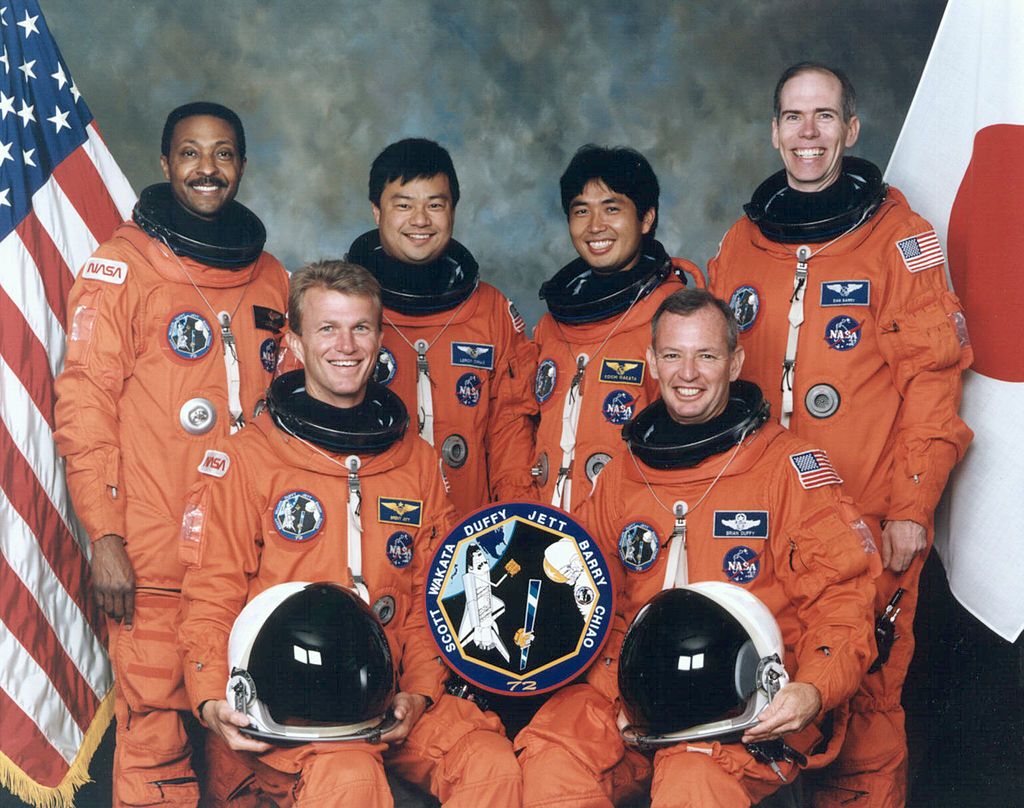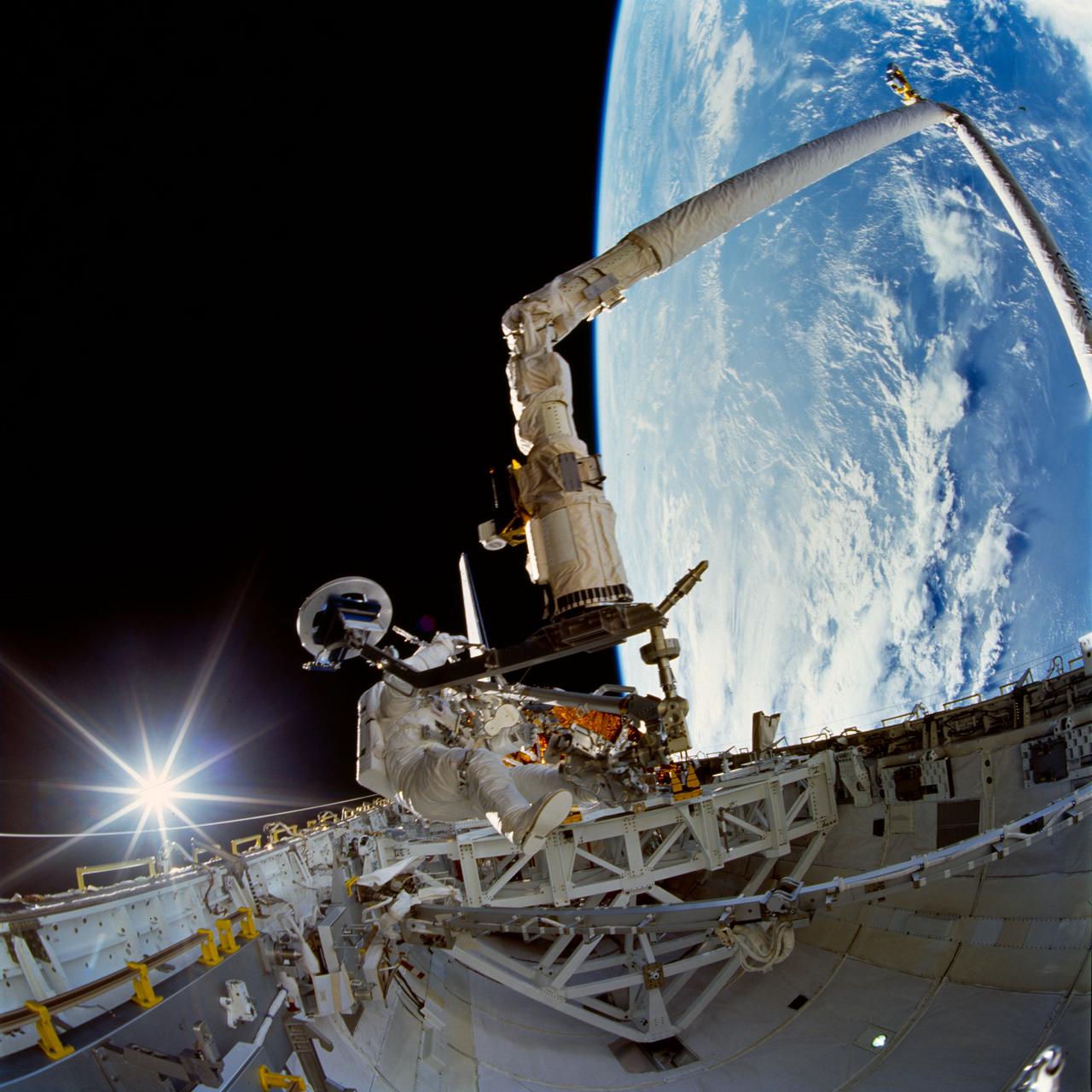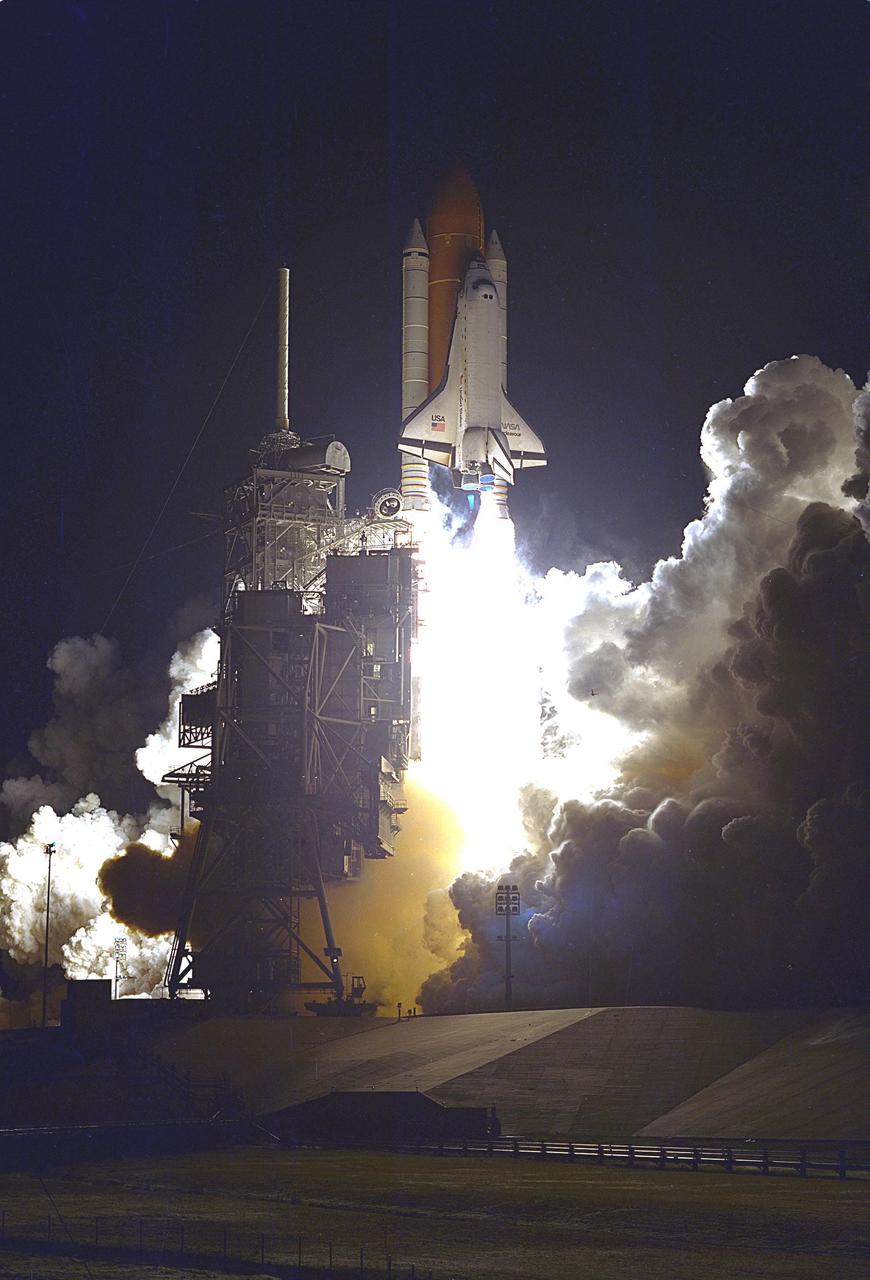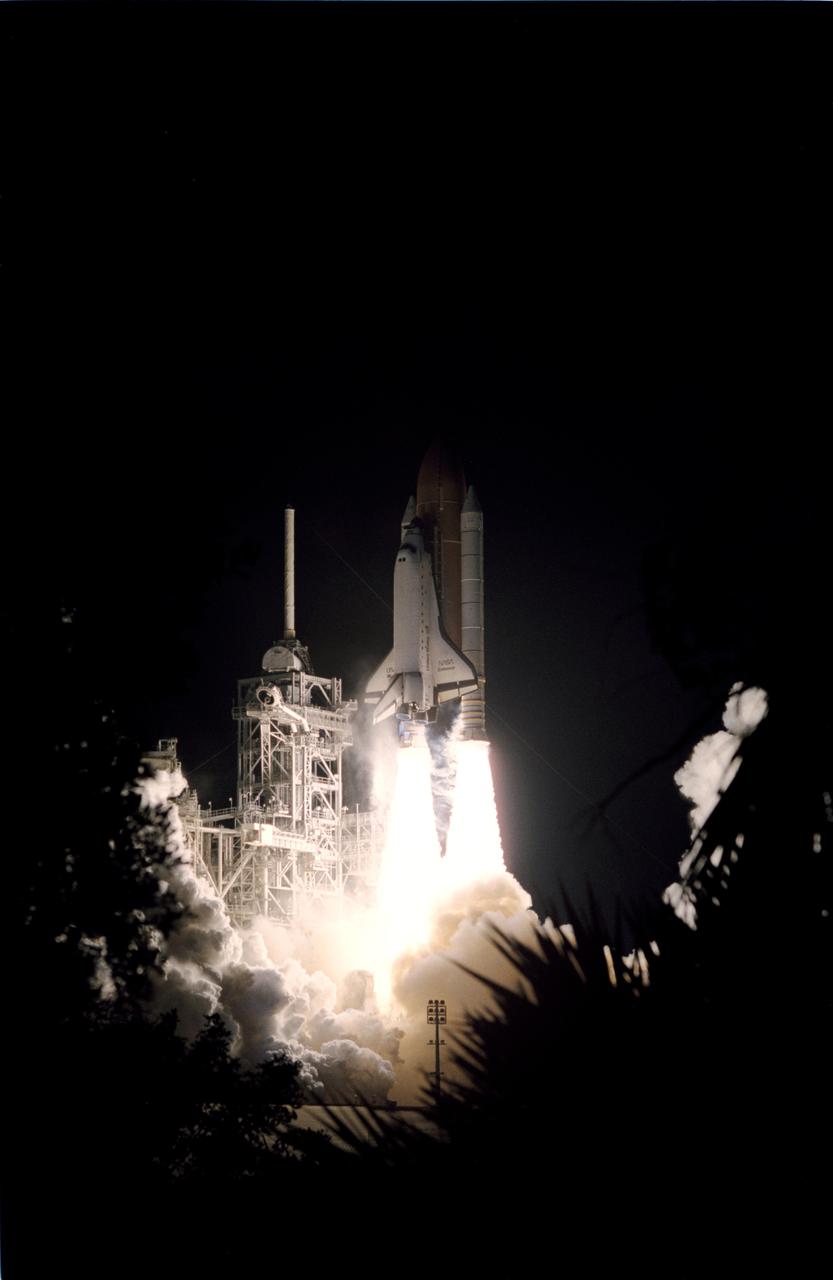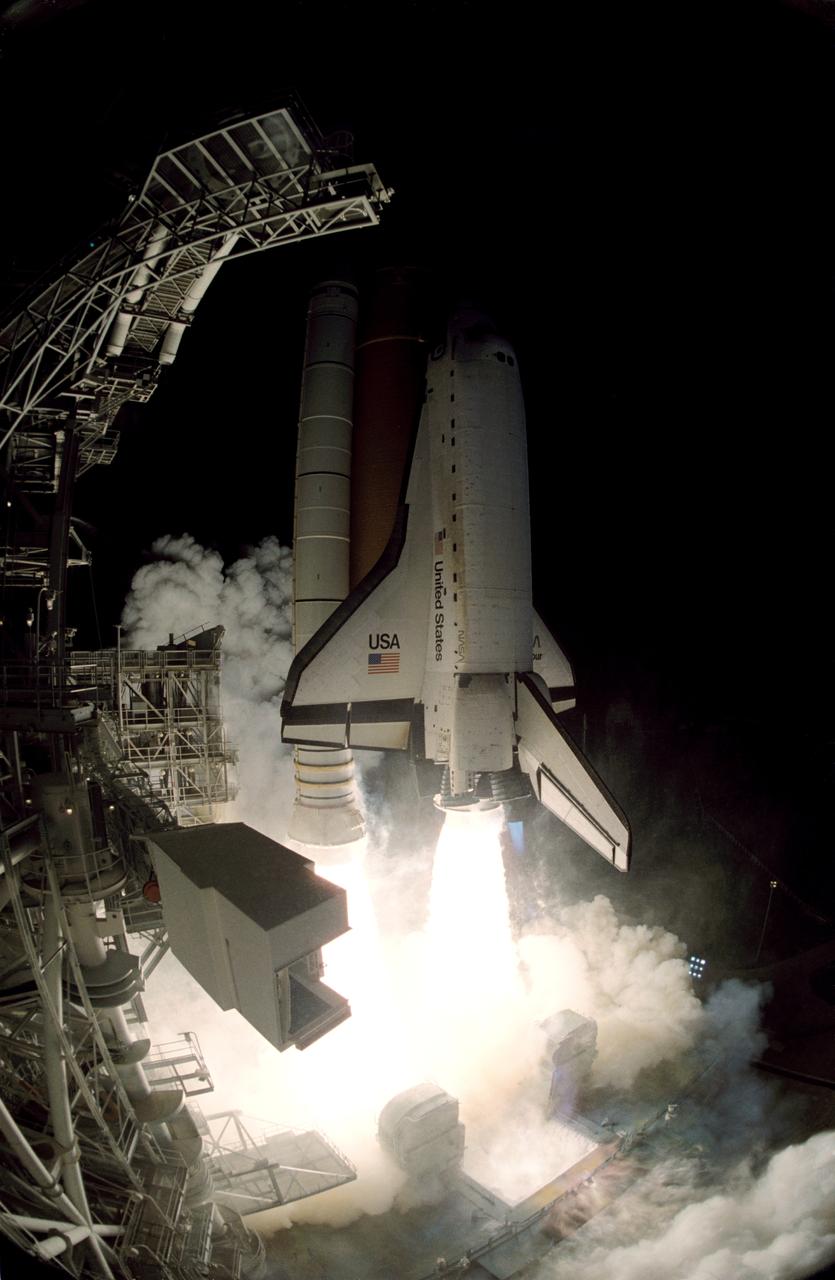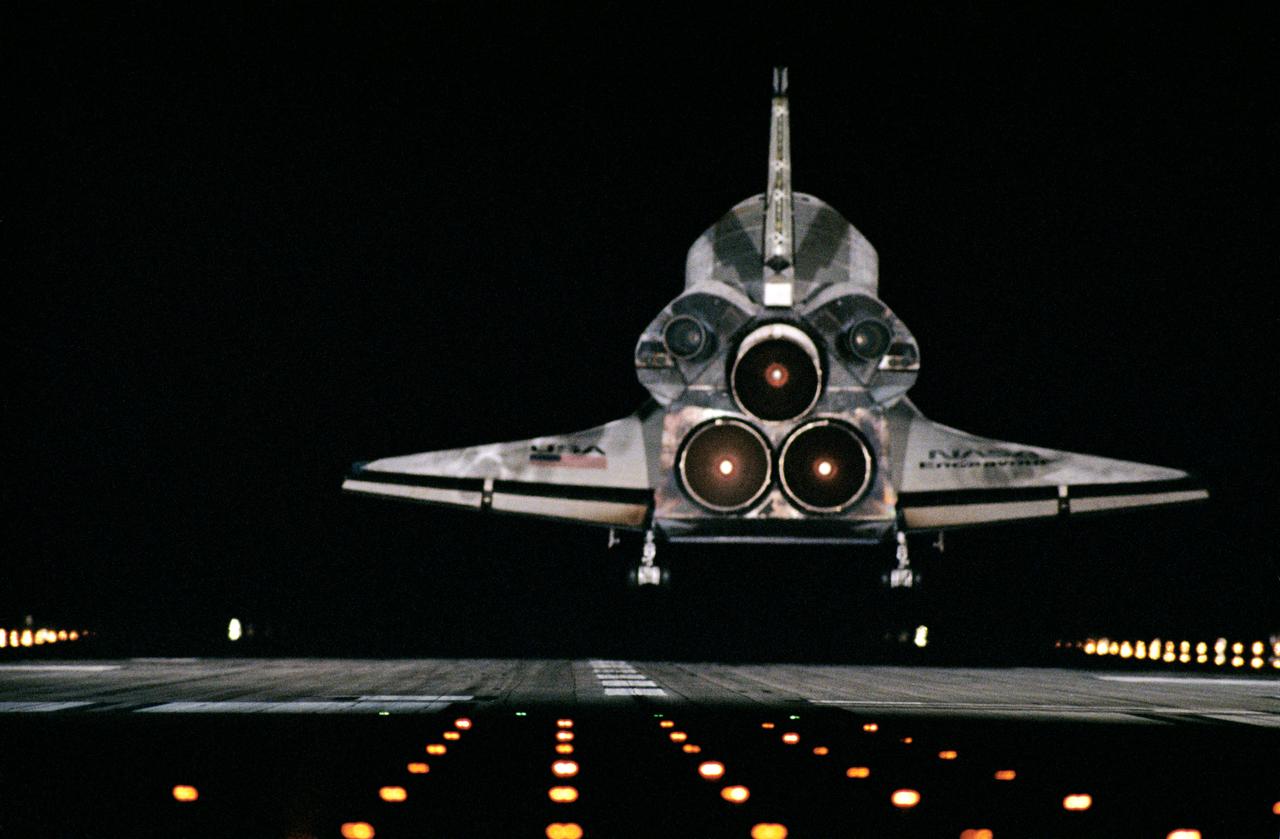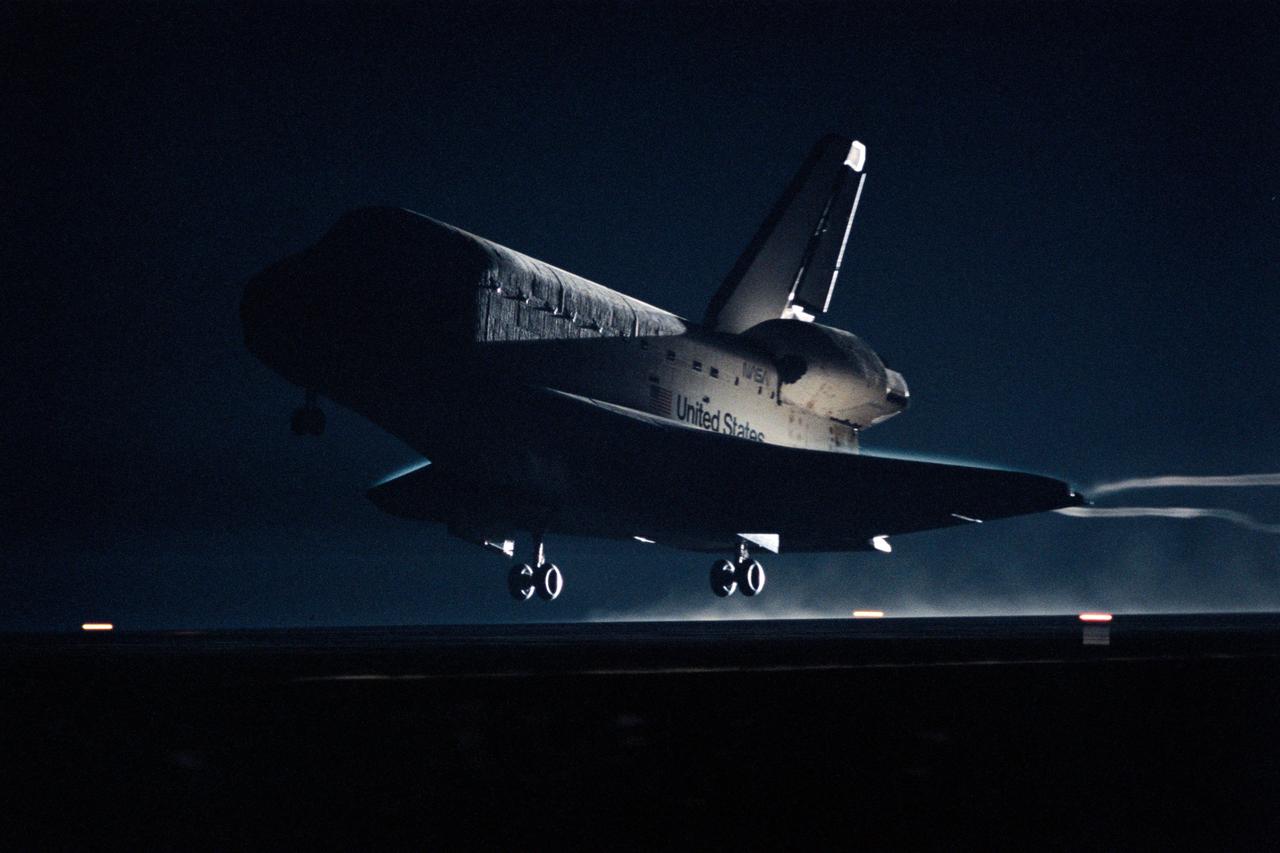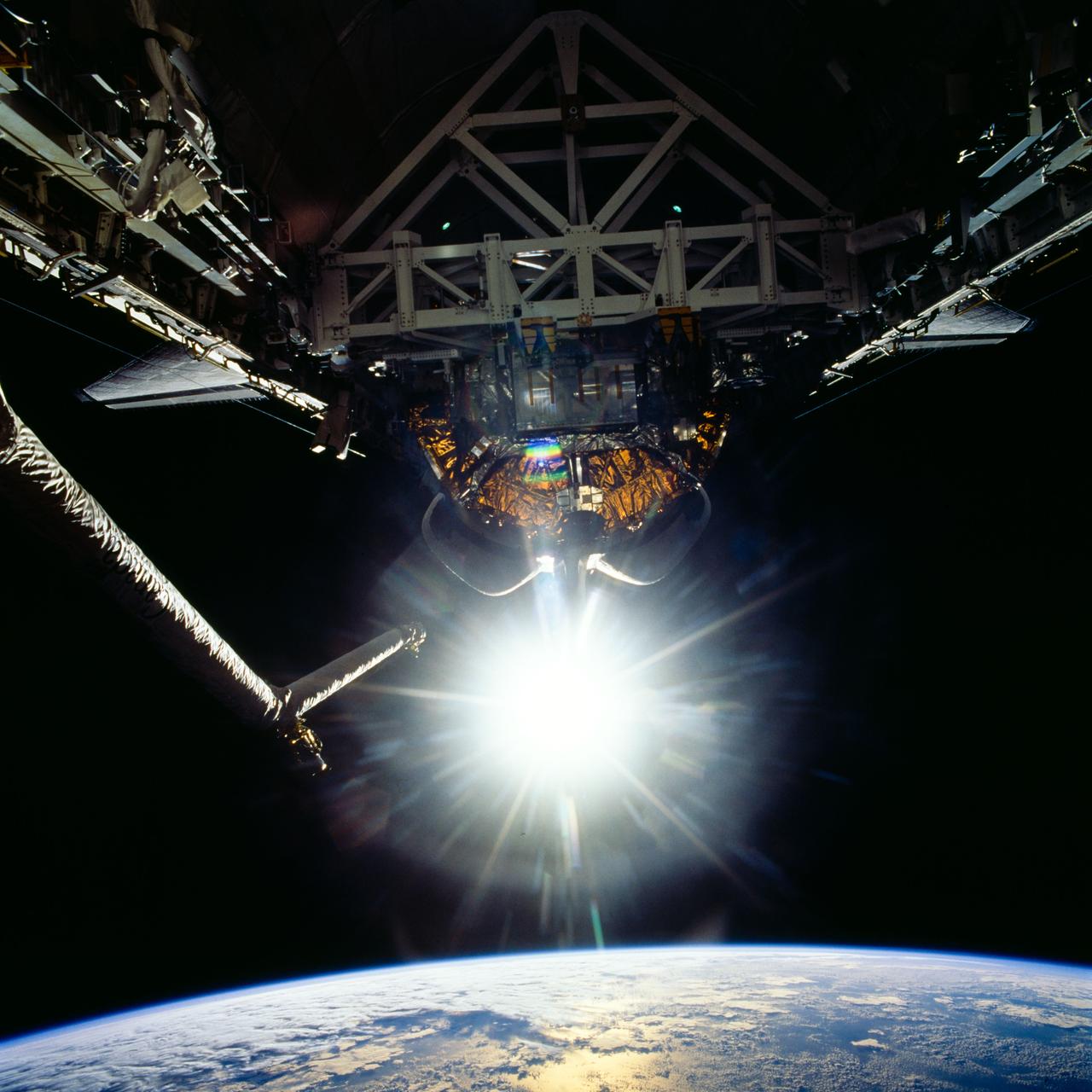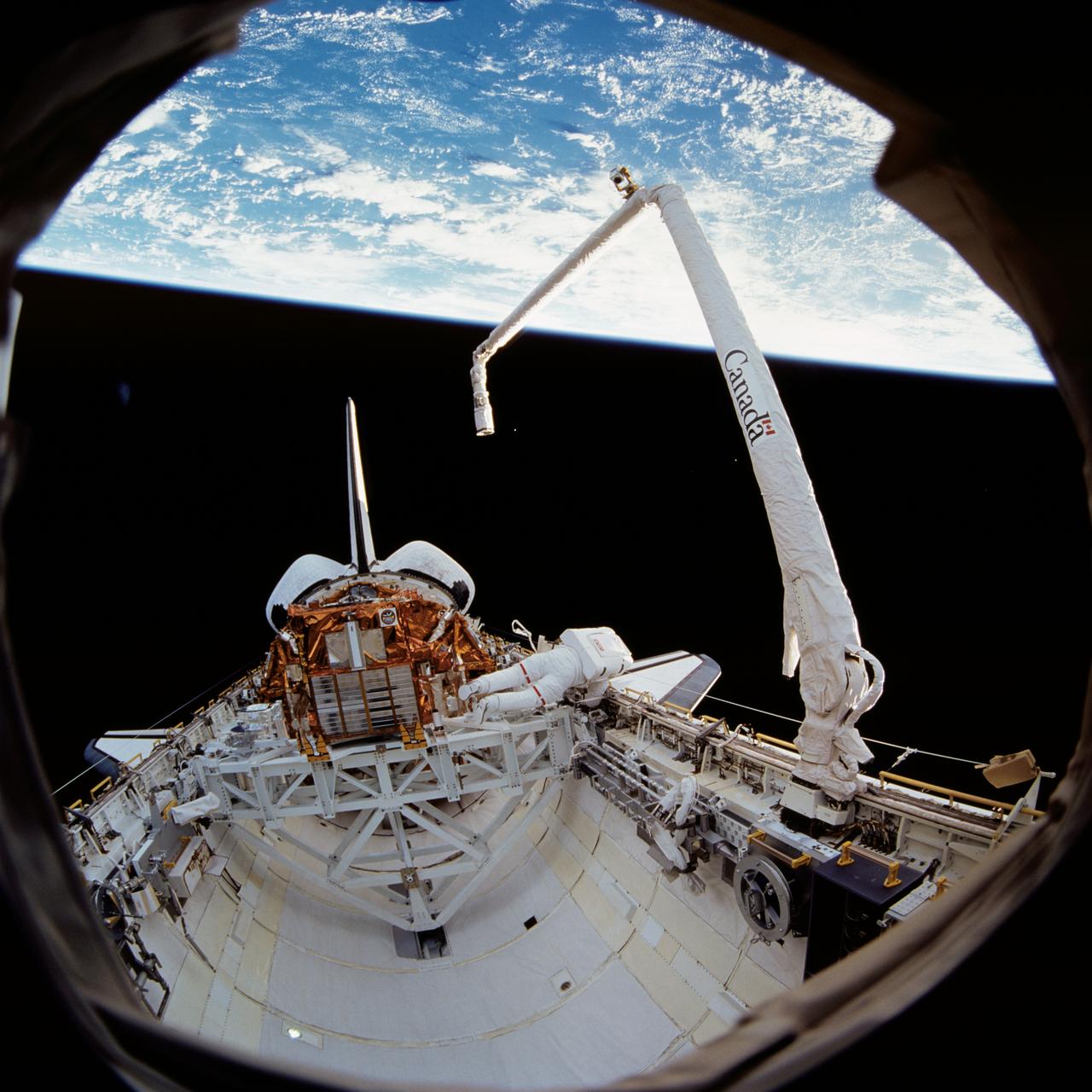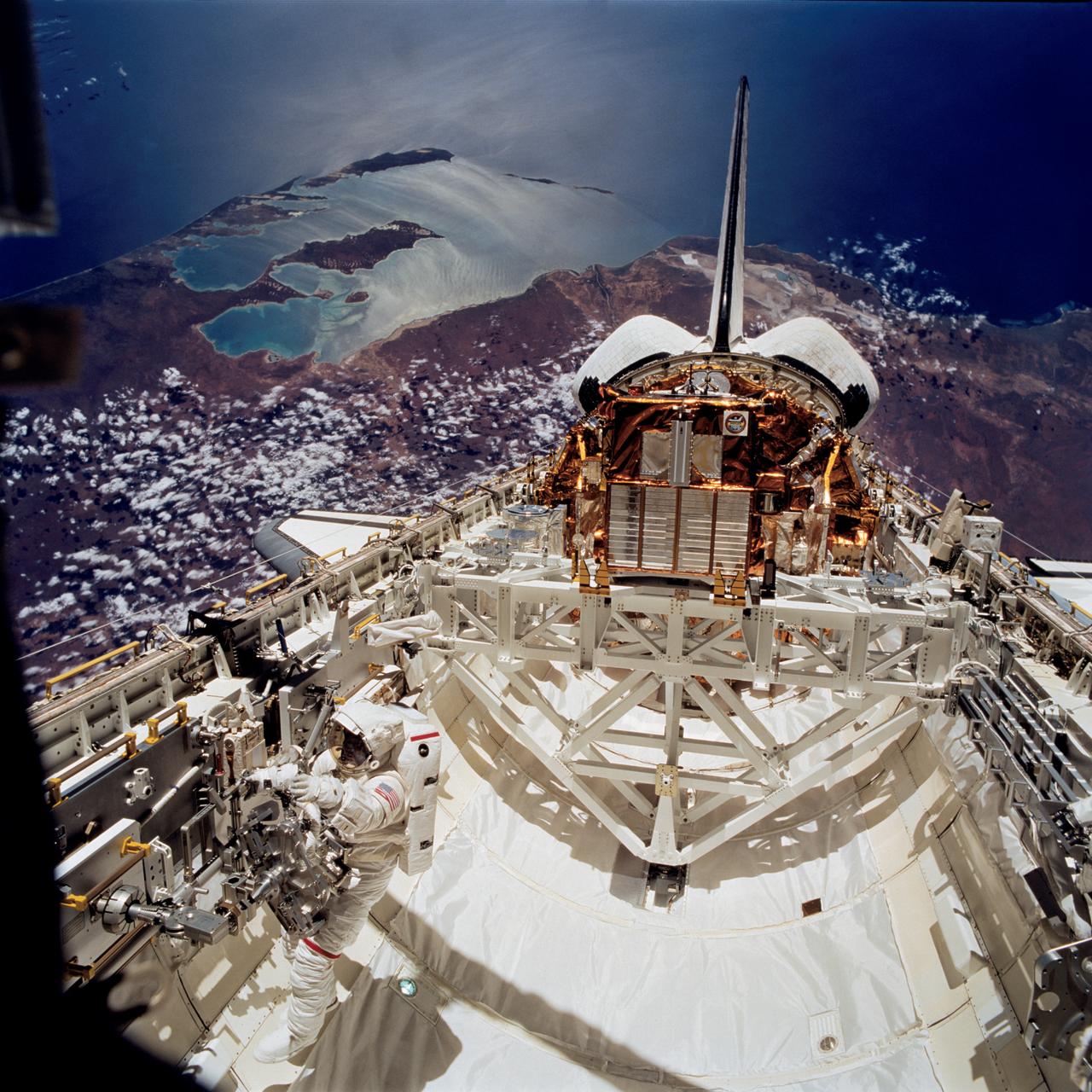STS-72 Fact Sheet
By Cliff Lethbridge

STS-72 — Endeavour
74th Space Shuttle Mission
10th Flight of Endeavour
Crew:
Brian Duffy, Commander
Brent W. Jett, Jr., Pilot
Daniel T. Barry, Mission Specialist
Leroy Chiao, Mission Specialist
Winston E. Scott, Mission Specialist
Kiochi Wakata, Mission Specialist
Orbiter Preparations:
Tow to Orbiter Processing Facility – September 18, 1995
Rollover to Vehicle Assembly Building – November 30, 1995
Rollout to Launch Pad 39B – December 6, 1995
Launch:
January 11, 1996 – 4:41:00 a.m. EST. Launch was delayed 23 minutes due to communications glitches between various ground sites and to avoid a potential collision with orbiting space debris.
Landing:
January 20, 1996 – 2:41:41 a.m. EST at Runway 15, Kennedy Space Center. Rollout distance was 8,770 feet. Rollout time was 66 seconds. Mission duration was 8 days, 22 hours, 1 minute, 47 seconds. Landing occurred during the 141st orbit.
Mission Summary:
The orbiting Japanese Space Flyer Unit (SFU) was retrieved using the Shuttle’s remote manipulator system. The scientific satellite was launched on March 18, 1995 aboard a Japanese H-2 rocket from the Tanegashima Space Center.
The Office of Aeronautics and Space Technology-Flyer (OAST-Flyer) scientific platform was deployed to a distance of about 45 miles from Endeavour. It was retrieved after conducting two days of “free-flying” experiments.
OAST-Flyer tested a satellite’s exposure to contamination, the space-based potential of the Global Positioning System (GPS) satellite array, laser ordnance devices and amateur radio communications technology.
On January 15, 1996 astronauts Chiao and Barry conducted a spacewalk lasting 6 hours, 9 minutes to evaluate a new portable work platform and a rigid umbilical, both of which may be employed in space station construction operations.
On January 17, 1996 astronauts Chiao and Scott conducted a spacewalk lasting 6 hours, 54 minutes to again test the portable work platform, plus a utility box designed to hold avionics and fluid line connectors. Scott also evaluated his spacesuit’s warmth in a severe cold environment.
Additional payloads included the Shuttle Solar Backscatter Ultraviolet (SSBUV) instrument to measure ozone concentrations in the upper atmosphere. A Hitchhiker carrier held the Shuttle Laser Altimeter-01 (SLA-01)/GAS payload.
SLA-01 remote sensors accurately measured the distance between the Shuttle and the earth’s surface. Five other GAS canisters held a variety of experiments.
Other payloads included the Physiological and Anatomical Rodent Experiment/National Institutes of Health-Rodents (PARE/NIH-R3) rodent experiments and Space Tissue Loss/National Institutes of Health-C (STL/NIH-C5) to study microgravity’s effects on bone, muscle and cells.
Also flown were the Protein Crystal Growth-Single Locker Thermal Enclosure (PCG-STES) to grow high-quality protein crystals and the Commercial Protein Crystal Growth-8 (CPCG-8) payload which grew crystals of a new form of recombinant human insulin.
SELECTED NASA PHOTOS FROM STS-72
